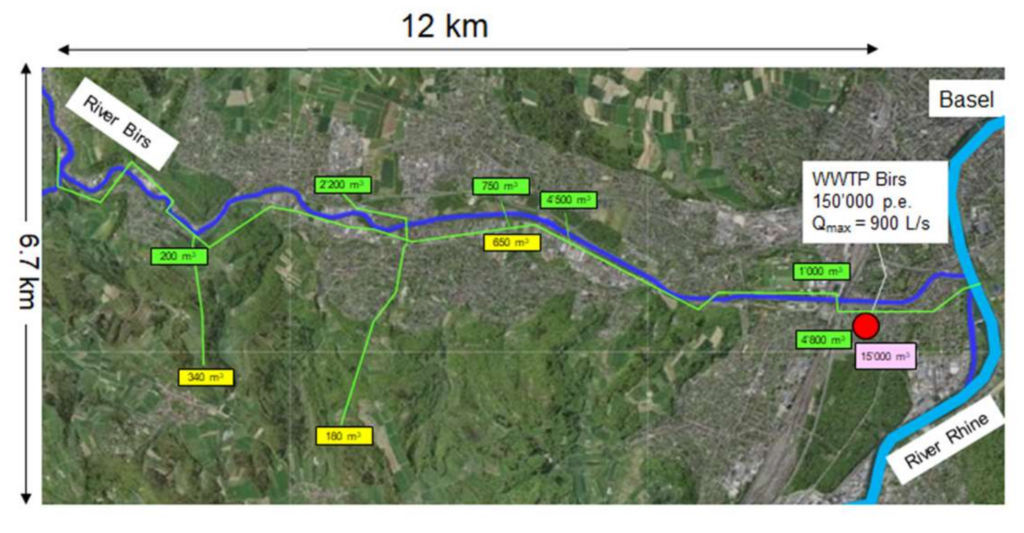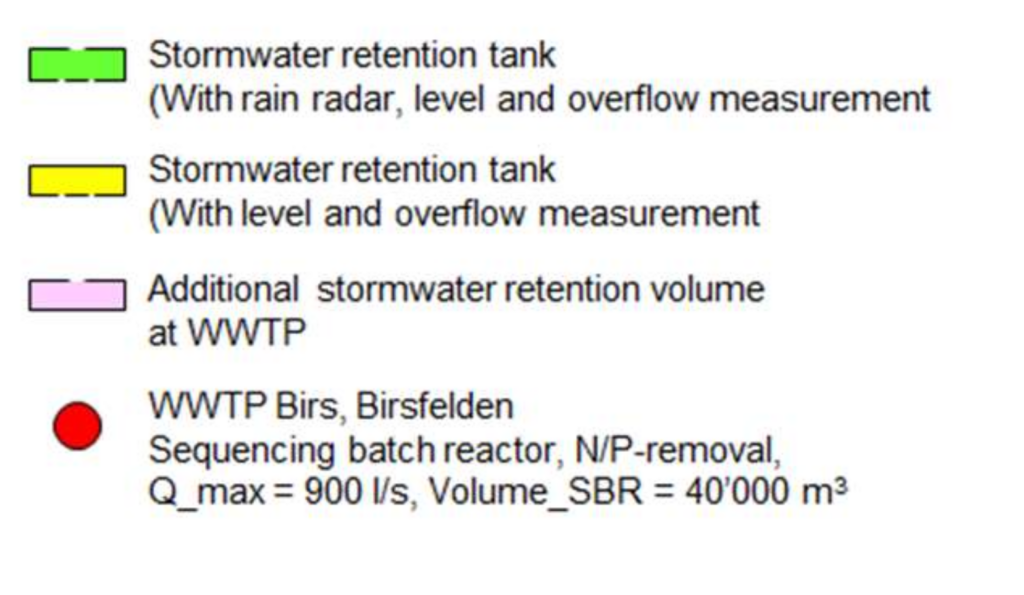CASE 3: Use of rain radar and adaptive WWTP operation to minimize CSO spills in the Birs catchment
Partner in charge: FHNW (Fachhochschule Nordwestschweiz)
Location: Catchment River Birs and Birsfelden, Northwestern Switzerland
The catchment of the River Birs covers an area of about 45 km2.and is drained with combined sewers. It is a comparatively small catchment with short flow times, i.e. sewage arrives at the WWTP within a few hours. The system provides nine stormwater retention tanks with a total volume of 14,620 m3.
Current Status Case Study + Needs for Improvement:
The central retention basin at the WWTP and the nine tanks in the sewer system are insufficient to retain the stormwater for all storm events. Recent investigations have shown that considerable volumes are discharged from the retention tanks during heavy rainfall events into the Birs or contributing creeks. To date, no recorded information is available on the actual water quality as a result of these CSO spills, though temporary drops of the oxygen content in the river Birs during storm events have been detected. Such spills are mainly due to the flow capacity limitation of the WWTPs (900 l/s in this case). On-demand increase of storage volume during rain events by adapting the WWTP operation (SBR tank lowering/emptying) has recently been investigated. The switch to these modes is triggered by forecasts of expected flows obtained from rain radar data in the catchment.
Activities - Technical configurations and envisaged improvements
On-line turbidity and conductivity measurements will be carried out for the nine existing stormwater retention tanks' overflows and the main combined sewer overflow. On this basis, other stormwater/sewage pollutants with composite sampling are analysed. In addition, overflow discharges and pollutant loads will be balanced for sev- eral rain events in the actual optimized configuration (with a rain radar control loop) and with a “traditional” configuration without any control loop to quantify the optimization potential. A model will be built of the Birs catchment US EPA’s Storm Water Management Model (EPA SWMM) v5.1 (hereafter referred to as SWMM).
Ambition until the Project End and Beyond
The case study aims at improving the knowledge on pollution load deriving from CSO spills by collecting new data and building in the existing hydraulic information. This knowledge is used to asses the potential of rain-ra- dar controlled flexible management of the treatment capacity at the municipal WWTP on pollution discharge re- duction. The feasibility and benefit of using rain-radar information will be tested to trigger this switch in opera- tion for conventional activated sludge systems. Demonstration of the low-tech IoT sensors will be made to assess pollutant loads in sewered catchments during storm events by measuring proxies.


Scheme of the WWTP Birs sewer network with combined sewage storage tanks.
